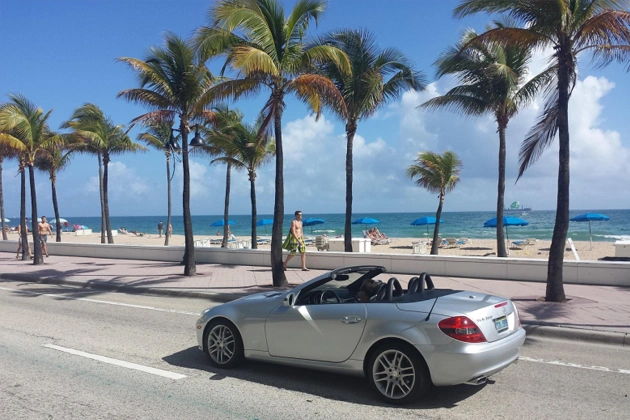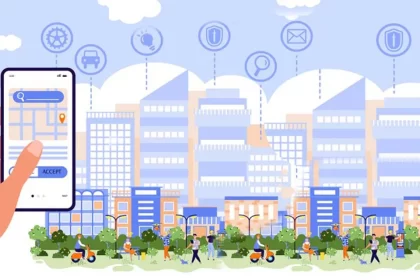Miami has become one of the busiest regions in Florida, with roads that stay crowded nearly every day of the year. Between local drivers, out-of-town visitors, and commercial traffic, accidents are not just possible; they happen every day. While some are small and cause little harm, many involve serious injuries or worse. The reality is that driving in Miami brings real risks, and every person on the road is affected by this in one way or another.
Each number in the reports reflects something more than a statistic. Every crash has a ripple effect. There are families disrupted, people taken off work, and individuals trying to recover from injuries that may take months or longer to heal. These are not rare events; they are regular parts of life in a city where traffic moves quickly and unpredictably.
Understanding how often accidents happen in Miami is not just useful; it is necessary. The more we know about the patterns and risks, the better we can respond with prevention and timely care.
Miami Car Accidents Statistics
Each year, there are more than 300 fatalities on Miami-Dade County roads. This does not include hundreds of other accidents that involve serious injuries. Behind each incident is a family, a workplace, and a community affected by the lasting impact of roadway trauma.
According to the most recent data, Miami–Dade County experienced 64,627 motor vehicle crashes in a single year. These incidents led to 31,270 injuries and 293 fatalities. These numbers are more than just statistics; they reflect the real and ongoing safety challenges faced by people living in one of Florida’s busiest and most densely populated areas.
Vulnerable road users were also impacted at alarming rates. There were 822 reported bicycle crashes, 20 of which resulted in death. Motorcycle accidents totaled 1,084, with 45 fatalities. Pedestrians were involved in 1,589 collisions, further highlighting the risks faced by those walking in high-traffic zones. Among the 21,177 injury crashes, many required immediate medical attention, placing consistent pressure on emergency care services.
Law enforcement remained deeply involved across the board. Of the total crash investigations, 44% were handled by city police departments, 32% by sheriff’s offices, and 23% by the Florida Highway Patrol. These numbers show the scale of response required to manage Miami’s high traffic volume and the toll it takes on public safety resources.
However, even with the efforts of the authorities, victims continue to suffer. Access to reliable medical care remains essential for those injured in these crashes. Recovery often depends on having timely support from trusted healthcare providers who understand the physical and emotional toll of accident-related trauma.
Common Causes of Car Accidents in Miami
There are many reasons why car accidents continue to happen on Miami’s streets. Among the most frequent are distracted driving, speeding, and ignoring traffic signals. Distractions come in many forms. It can be a driver looking at a phone, adjusting the radio, or talking to someone in the car. When attention shifts away from the road, even briefly, the chances of a crash rise quickly. In a city where traffic moves fast and roads change direction, small lapses can have serious consequences.
Speeding is also a big issue. Some drivers ignore the limits set on highways and city roads. When cars are going too fast, they cannot stop in time if something unexpected happens, like a car pulling out or a pedestrian stepping into a crosswalk. Speed also increases the impact of a crash, which makes injuries more serious and the damage more costly.
Running red lights, failing to yield, and turning without checking for oncoming traffic are also common mistakes that lead to collisions. These happen often at busy intersections or when drivers are in a rush. In some parts of Miami, the layout of roads can be confusing, with turns and signals that are not clearly marked. This adds to the problem, especially for out-of-town visitors.
Another major factor is impaired driving. Late at night, especially on weekends, driving under the influence of alcohol or drugs still causes a large number of preventable crashes. These accidents often result in severe injuries or death, not only for the person behind the wheel but also for others nearby.
Even the weather plays a role. Miami is no stranger to heavy rain, and when roads are wet, stopping takes longer, and tires can lose grip. Some drivers do not adjust their speed when conditions get worse, leading to dangerous situations. By recognizing what leads to crashes, people can take steps to avoid them. Small changes in how someone drives can go a long way in making the roads safer for everyone.
Areas with the Most Deadly Crashes in Miami
Some sections of Miami experience a greater number of fatal crashes compared to other areas. Locations like Interstate 95, the Palmetto Expressway, and intersections within downtown, such as the Brickell Avenue Bridge, bring together fast traffic, crowded lanes, and complicated layouts. This combination creates serious safety challenges that often lead to deadly outcomes.
Walkable areas like Little Havana face their own risks, where high numbers of people crossing streets meet inconsistent pedestrian protections. Streets like Alton Road and Dade Boulevard have also been identified as frequent sites of collisions, making them areas of concern for both drivers and those on foot.
Types of Injuries Most Often Reported in Miami Crashes
The damage caused by car crashes varies, but certain types of injuries show up often in medical reports. Some are felt right away, while others may not appear until hours or days after the accident. In either case, it is important to take them seriously and get checked by a professional.
Back injuries are among the most common in car crashes, and Miami is no exception. The impact of a crash can put a lot of pressure on the spine, leading to problems such as herniated discs, muscle strain, or even nerve damage. These injuries can make it hard to walk, bend, or sit comfortably and sometimes require long-term care.
Neck injuries happen often as well. Many involve whiplash, which occurs when the head snaps forward and back quickly during a collision. This motion can stretch the muscles and ligaments in the neck beyond their limit, resulting in stiffness, headaches, and pain that may take weeks to go away.
Head injuries are another serious concern, especially with high-speed collisions in Miami, FL. When a person hits their head during a crash or the brain moves quickly inside the skull, it can lead to a concussion or more severe brain trauma. Even mild head injuries can affect memory, mood, and focus. Some symptoms may not be clear right away, which is why early testing is key.
Broken bones are also frequently reported in Florida crashes, including Miami accidents. Arms, ribs, legs, and wrists can all be injured, especially when seat belts tighten during a crash or a limb is caught between parts of the car. Healing from these breaks often requires time off work, physical therapy, and in some cases, surgery.
People walking or biking who get hit by a car are at even greater risk. Without the protection of a vehicle around them, they may experience multiple injuries at once, including internal damage, broken hips or legs, or long-term mobility issues. These types of injuries often take longer to treat and can have a lasting impact on someone’s life.
Steps to Take After Being Involved in a Car Accident in Miami
Being in a car crash is frightening and stressful, but knowing what to do after it happens can make a big difference in your recovery and your legal outcome. The first priority should always be safety. If you can move your vehicle out of the way of traffic, do so. Turn on your hazard lights and take a deep breath before getting out to check on yourself and others. If anyone is hurt or if there is damage to the vehicles, call for emergency services right away.
Even if it feels like a small accident, having a police officer come to the scene is helpful. They will create a report that includes important details such as time, location, weather conditions, and the names of everyone involved. This document can be used later when working with insurance companies or if any legal concerns come up.
While at the scene, collect as much information as you can. Exchange contact details and insurance information with the other driver. Try to take photos of the cars, the road, and anything else that might be useful later. If anyone saw what happened, ask if they are willing to give their name and number as a witness.
Do not admit fault or apologize. It is common to feel emotional or overwhelmed, but saying the wrong thing in the heat of the moment can complicate future claims. Let the professionals gather the facts and figure out what happened.
Once you leave the scene, go see a doctor even if you feel okay. Some injuries may be hidden or delayed. A medical checkup will create a record of how you felt after the crash, which could be important if symptoms show up later.
You should also notify your insurance company about the accident as soon as possible. If your car accident injuries are serious or if you are unsure of what to do next, speaking with a lawyer may help you protect your rights and guide you through what comes next.
Importance of Seeking Timely Medical Attention
After an accident, some people assume they are unhurt if they do not see blood or feel pain right away. But the truth is that injuries often take time to show up. A person might feel fine at first, only to experience headaches, stiffness, or weakness hours later. That is why getting checked by a medical professional as soon as possible is one of the most important steps you can take.
Early treatment helps in two major ways. First, it allows doctors to spot injuries before they become worse. A small strain could turn into long-term damage if left untreated. Conditions like concussions, internal bruising, or spinal injuries might not be obvious at first, but they can be dangerous if ignored. Catching these problems early gives the body a better chance to heal.
Second, medical records support your case if you need help covering costs. Insurance companies often look at when you see a doctor. If there is a long delay between the crash and the visit, they may claim the injury came from something else. Going to a doctor right away shows you were serious about your health and gives your case stronger backing.
This also applies to people with past injuries or chronic pain. A crash can make those conditions worse, but if there is no recent exam, it can be hard to prove the connection. Seeing a medical provider quickly helps document what changed.
The goal of getting timely medical attention is to have a professional look you over and guide your recovery. What may feel like a minor ache could be the first sign of something more serious. Taking that first step early makes recovery smoother and reduces the risk of long-term problems.
Choosing the Right Healthcare Provider
Not all medical care is the same, and that becomes clear after a car accident. The provider you choose can affect how quickly you heal and whether your treatment is handled properly. Some doctors and clinics have more experience with accident injuries. They understand the types of issues that show up in crashes, and they know how to look for symptoms that might not seem obvious at first.
Along with experienced healthcare providers and advanced medical equipment, strong communication remains one of the most important parts of effective care. A good provider will take time to explain what is going on in your body, talk about treatment options, and make sure you understand each step.
At the right clinic, you would feel like your concerns are heard and taken seriously. It is also helpful to choose a provider who follows up with you. Recovery can take weeks or longer, so having a team that checks in and tracks your progress matters.










